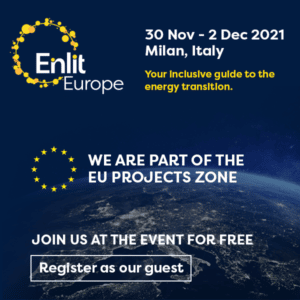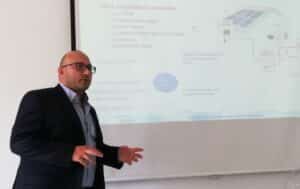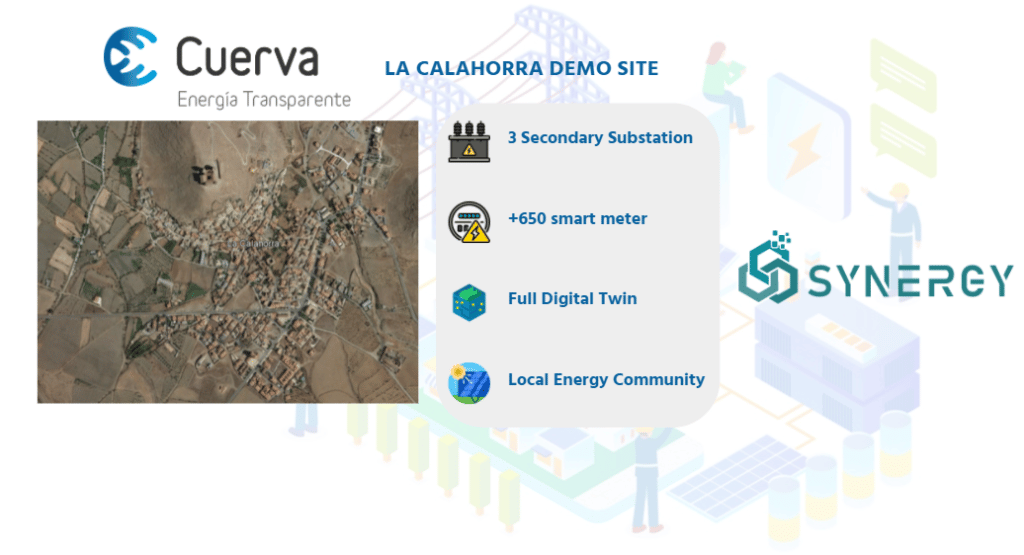Interview with Dr. Fenareti Lampathaki, Technical Coordinator of the SYNERGY project
by GECO Global & SUITE5

The SYNERGY project has now progressed to the deployment stage, and as part of that, has released the beta version of the SYNERGY Platform, a cutting-edge Big Data Platform and AI Marketplace, that targets any stakeholder of the electricity data value chain.
Dr. Fenareti Lampathaki, the Technical Coordinator of the SYNERGY project and Technical Director at Suite5 Data Intelligence Solutions, has shared more details about the SYNERGY Platform and the next steps.

Could you describe in a few words the innovation of the SYNERGY Big Data Platform?
The innovations brought forward by the SYNERGY Platform can be summarized into: (I) efficient data management of previously disperse and non-interoperable energy data, (II) trustful data sharing within the electricity data value chain, and (III) actionable data-driven insights extracted by data analytics pipelines that are fully configurable (by data scientists or technical/business users). In particular, through its data collection, sharing and analytics functionalities, significant challenges such as secure data management, data interoperability, lack of analytics skills, can be effectively addressed in the SYNERGY Platform. In addition, through its Data & AI Marketplace, the SYNERGY Platform allows the electricity data value chain stakeholders to share their data assets (either original datasets or derivative data or pre-trained analytics models) in a reliable and trustworthy manner, powered by Distributed Ledger Technologies, and effectively leverage the paradigm shift in data generation and data ownership in the electricity data value chain.
As depicted in the following figure, the SYNERGY Platform consists of different Data Services Bundles that have well-defined interfaces to ensure their seamless integration, namely:
- The Data Collection Services Bundle that allows the configuration and scheduled/on-demand execution of data ingestion while taking care of data mapping and transformation, according to the Common Information Model, and quality assurance by applying different data cleaning rules. Data ingestion may occur in the cloud, on-premise (through a dedicated server edition of the SYNERGY On-Premise Environment for stakeholders that are concerned about end-to-end data security or do not wish their data to leave their premises) and in the edge (through the edge edition of the SYNERGY On-Premise Environment installed on gateways).
- The Data Security Services Bundle that enables the definition and enforcement of (attribute-based) access policies on any data asset (e.g. dataset, pre-trained model, analytics pipeline result) according to the preferences of its provider. It also allows anonymization of personal or sensitive data and encryption of data (that are ingested from the server on-premise environment);
- Data Sharing Services Bundle, that encapsulates the Data & AI Marketplace (for sharing any data asset), and manages the licenses and IPR of the different data assets and their derivative data assets. It is also responsible for handling the lifecycle of the smart contracts signed among all involved stakeholders in order to legitimately share a data asset.
- Data Matchmaking Services Bundle with faceted and advanced search functionalities over any data asset, along with a smart recommendation system on data assets and data asset providers.
- Data Analytics Services Bundle that enables any stakeholder to: (a) design an analytics pipeline (utilizing data they own or have acquired), (b) execute it in the cloud, in the server on-premise environment (if the data have not left the premises of a stakeholder) and in the edge, and (c) visualize the results upon configuring the information to be displayed in a chart. In addition to a number of machine learning and deep learning algorithms supported in an out-of-the-box manner, as adopted by popular AI libraries (e.g. sk-learn, Spark MlLib, Tensorflow), a set of pre-trained energy data analytics blocks is also offered.
- Data Governance Services Bundle that look into data lineage aspects and handle the CIM lifecycle (since changes can be performed at any moment on the “live” Common Information Model without affecting the platform operation).
- Platform Management Services Bundle that supports the orchestration of all services offered by the platform and addresses the underlying security and identity management aspects. It also allows the different stakeholders to configure how they want to retrieve data or results for use by their legacy or operational systems, through fully customizable APIs exposed on demand by the SYNERGY Platform.

More details on the SYNERGY Integrated Platform from the user perspective can be found in the SYNERGY Deliverable D3.4 “SYNERGY Integrated Platform & Open APIs – Beta Release”.

What is different about the SYNERGY Big Data Platform compared to other platforms out there that perform similar functions?
In contrast to generic-purpose big data platforms that appear in the market, the SYNERGY Platform brings in a strong domain expertise that is manifested through: (a) the SYNERGY Common Information Model that effectively models the data requirements and interactions of the electricity data value chain stakeholders, and underpins the overall Platform operation, and (b) a set of pre-trained analytics that essentially offer readily available solutions (in the form of trained models or analytics pipelines) for specific domain-related problems, i.e. Demand Forecasting, Flexibility Forecasting, Generation Forecasting, Occupants Behaviour and Comfort Profiling, and Predictive and Preventive Maintenance. The SYNERGY Platform also guarantees that a strict Know-Your-Customer policy is applied in order to ensure that only stakeholders of the electricity data value chain are granted access.

When will the next version of the platform be launched and do you maybe have a timeline for things coming up that we can share with everyone?
The SYNERGY Beta Platform is already deployed at: https://synergy-bigdata.eu/ and any stakeholder is welcome to register. Since access is limited to the consortium members at the moment, external early adopters are expected to be approved to access the SYNERGY Platform in Spring 2022.
The next release of the SYNERGY Platform is planned to be launched by the end of 2021, bringing a set of new functionalities and improvements to the user experience.

Where do you envision SYNERGY Big Data Platform to be in the next few years?
The SYNERGY Platform aspires to become a one-stop-shop for electricity data value chain stakeholders that aims at attaching value to their own data assets, at unveiling insights they could not previously acquire, and at reaping the benefits of the reuse of their own data assets.











